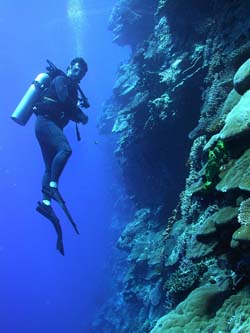Deep Sea Explorations
Vast expansion of the blue ocean is always an intriguing sight. It embodies the under water world of animals, plants, insects apart from great secrets, treasures, misfortunes and resources. Primarily, the sea was explored to unearth the wreck of a ship laden with expensive goods. These excavations opened the doors to look into what the sea had to offer by itself just like mother earth. Hidden in its expanse are resources like oil, electricity, precious stones like pearls and corals, volcanoes, mountains and most importantly, stupendously resplendent collection of fishes for consumption and art. What started a quest for treasure led to some astonishing discoveries in the field of science and marine engineering. Using modern, cutting-edge technology we are now able to explore some of these areas and answer the many questions relating to them.Such exploration will continue to make a major contribution to our general understanding and appreciation of the oceans.
Basically, the sea bed was researched for the undeterred building and sail of submarines, submersibles invented during the world wars as a weapon for combat. Later on for more constructive reasons, they were taken for scientific observations. The depth of the sea was measured to pave way for laying under water cables for communication. They used sound weight machines to measure the depth of the sea. A long pole with weights were lowered into the sea bed. When it touched the sea bed with a thud, the depth of the sea was calculated.
These statistics were then taken into account to build harbours, naval bases, install oil excavating machinery, and other activities. We can categorize the explorations into two types. Scientific explorations and environmental explorations. Nowadays under water explorations attract a lot of tourists as well.Deep-sea exploration is the examination of physical, chemical, and biological conditions on the sea bed, for scientific or commercial purposes. Deep-sea exploration is a relatively recent human activity; the depths of the sea are at a halt a largely unknown part of the planet earth.

Science has aided mankind in leaps and bounds to understand the apprehensions of mother nature. Nevertheless, underwater science has also developed to unprecedented levels and helped in preserving the balance of nature. Oil and petroleum were meant to be found on land only, but a path breaking discovery found oil in the deep depths of the ocean. There is also the Trans Channel railway between London and Paris that ply in the sea bed of the English Canal. Marine biologists and environmentalists have always been interested by the study of under water creatures.They throw light into the life and habitats of the deep sea creatures, their adaptations to the environment and their fight for survival.
A study into their habitats can also warn us against natural disasters. It is found that deep sea creatures can warn us against natural calamities. Their sensory system is emits fluorescent light signals before a catastrophe like Tsunami or Hurricanes. Detecting fluorescence can allow scientists to spot animals that would otherwise be too effectively camouflaged to see. Fluorescence is also important because the proteins that allow animals to fluoresce are used in genetic research and new fluorescent animals may contain proteins that offer novel benefits in such work.
 Deep Sea Crabs
Deep Sea Crabs